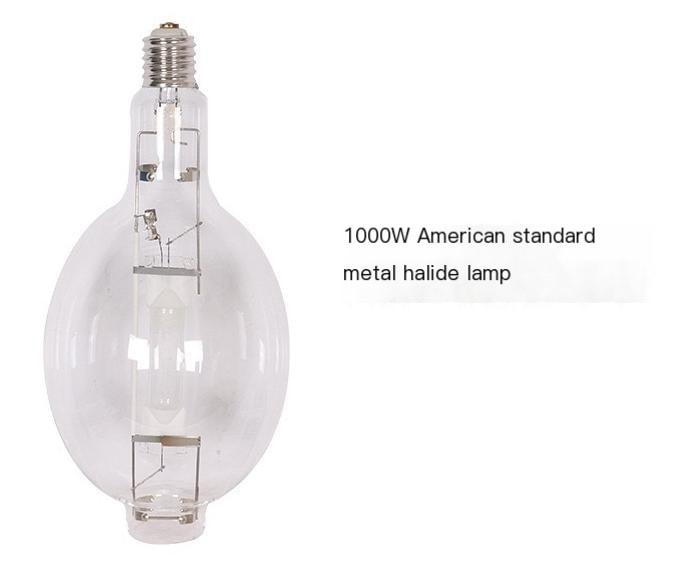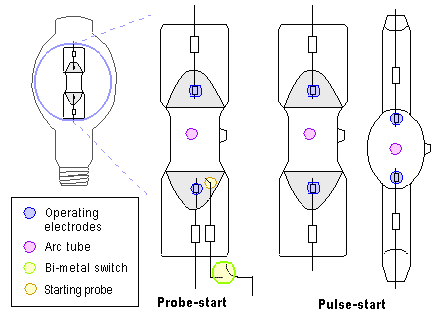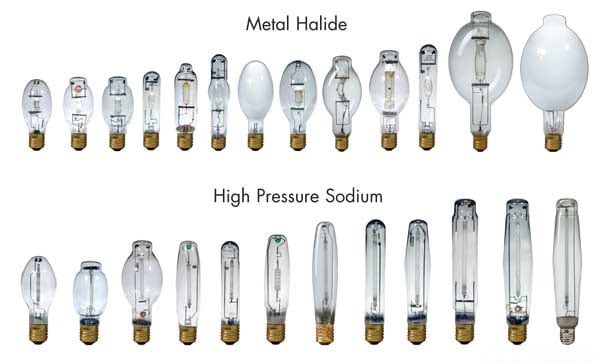Metal halide lights are common because they produce very bright light and are efficient in big lighting applications. You see them lighting up sports arenas, big industrial spaces, warehouses, streets, and even indoor gardens.
Even though they’re used a lot, people often wonder if metal halide lights are dangerous. The short answer is yes, they can be dangerous if you don’t use them right. We’re going to talk about the potential dangers, the risks, and how to use them safely.
What are Metal Halide Lights?
Metal halide (MH) lights are a type of high-intensity discharge (HID) lamp. These lamps produce light by creating an electrical arc between two electrodes inside a gas-filled tube. The tube contains vaporized metal halides, a combination of gases, including mercury and various metal salts. When the arc is formed, it excites these gases, which then emit light.
Metal halide lamps are known for their ability to produce bright, white light, closely resembling natural daylight. This makes them ideal for situations where high-intensity lighting is needed, such as in stadiums, factories, and large outdoor areas. Despite their advantages, metal halide lights must be handled with care due to their potential hazards.
Health Hazards of Metal Halide Lights
1. Exposure to Ultraviolet (UV) Radiation
One of the most significant dangers associated with metal halide lights is the emission of ultraviolet (UV) radiation. Under normal circumstances, the outer glass envelope of the lamp blocks harmful UV rays from escaping. However, if this outer layer becomes cracked or broken, the UV radiation can leak out, posing a serious health risk.
Prolonged exposure to UV radiation can lead to:
- Skin Burns: Just like exposure to sunlight, excessive UV radiation can cause painful sunburns.
- Eye Injuries: UV exposure can damage the eyes, leading to conditions such as photokeratitis, commonly known as “welder’s flash,” which can cause discomfort, redness, and vision problems.
- Increased Cancer Risk: Long-term exposure to UV radiation is also linked to an increased risk of skin cancer.
To minimize this risk, many metal halide lamps are coated with UV-blocking material, but users should ensure that the lamp is not damaged and that protective fixtures are in place to shield from potential radiation leaks.
2. Mercury Poisoning
Metal halide lamps contain mercury, a highly toxic substance. If a lamp shatters, mercury vapor can be released into the air, posing health risks to anyone in the vicinity. Mercury exposure can be harmful, especially if inhaled or absorbed through the skin, leading to symptoms such as:
- Nervous System Damage: Mercury poisoning can result in tremors, mood swings, and memory loss.
- Lung and Kidney Damage: Inhalation of mercury vapor can cause serious respiratory and renal problems.
Handling broken lamps properly is crucial. If a metal halide lamp breaks, avoid direct contact with the debris. Ventilate the area and follow recommended guidelines for safely cleaning up and disposing of mercury-containing lamps.
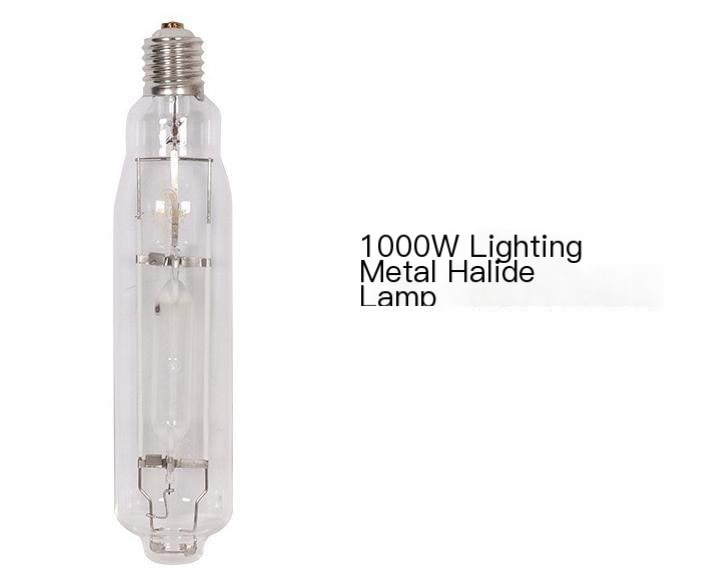
Physical Dangers of Metal Halide Lights
1. Explosion Risks
Metal halide lights can pose a risk of explosion if they are not used or maintained correctly. The inner arc tube operates at extremely high pressure, and any defect, such as a crack or improper handling, can lead to a rupture. This can cause the lamp to shatter violently, releasing hot glass shards and gases.
Explosions can happen due to:
- Overheating: Metal halide lamps produce significant heat, and improper ventilation or proximity to flammable materials can cause the lamp to overheat and explode.
- Manufacturing Defects or Aging: Over time, wear and tear on the lamp’s materials can weaken the structure, increasing the risk of rupture.
To reduce explosion risks, always install metal halide lamps in appropriately rated fixtures with protective glass coverings. Many manufacturers also produce “shatter-resistant” or “protected” metal halide lamps, which are designed to contain the fragments in case of failure.
2. High Heat Output
Another concern with metal halide lamps is the amount of heat they generate. The arc tube inside the lamp can reach temperatures of over 2000°F (1093°C). If these lamps are placed near combustible materials, they can pose a fire hazard. Additionally, inadequate ventilation can cause the fixture to overheat, damaging the lamp or the surrounding environment.
To mitigate this risk, metal halide lamps should be installed in areas with sufficient airflow and away from flammable objects. Regular inspections of the lamp and its surroundings can prevent overheating and fire hazards.
Electrical and Installation Risks
1. Electrical Shock
Metal halide lights operate using high voltage, and improper installation or maintenance can lead to the risk of electrical shock. This is especially dangerous during the installation or replacement process, where contact with live electrical parts can result in injury.
To avoid electrical shock:
- Always turn off the power before handling the lamps.
- Ensure that the fixtures are properly grounded.
- Use the correct tools and follow safety guidelines during installation.
2. Ballast Failure
Metal halide lamps require a MH ballast to regulate the electrical current and voltage. If the ballast fails, it can lead to irregular voltage, which can cause the lamp to overheat, flicker, or even explode. A malfunctioning ballast can also cause the lamp to fail prematurely, reducing its lifespan and leading to increased maintenance costs.
To prevent issues related to ballasts:
- Regularly inspect the metal halide ballast for signs of wear or malfunction.
- Ensure that the ballast is compatible with the specific type of metal halide lamp being used.
- Replace faulty ballasts immediately to prevent safety hazards.
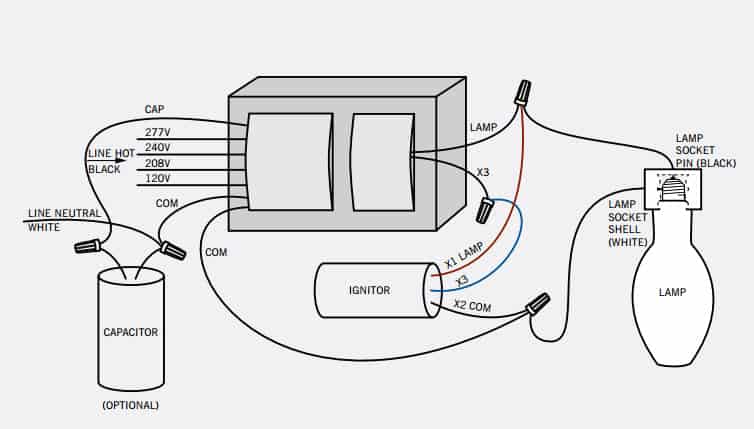
How to Use Metal Halide Lights Safely
Despite the potential dangers, metal halide lights can be used safely when proper precautions are taken. Here are some key steps to ensure safe operation:
1. Proper Installation
Always follow the manufacturer’s installation guidelines to ensure that the metal halide lamps are used in suitable fixtures. Choose fixtures that are rated for the specific wattage and type of lamp you are using. Additionally, ensure that the lamp is installed in a well-ventilated area to prevent overheating.
2. Regular Maintenance
Routine maintenance is essential for identifying potential issues before they become serious hazards. Check for signs of wear, such as darkening, flickering, or cracking of the lamp. Also, inspect the ballasts to ensure they are functioning properly. Replace any damaged components immediately.
3. Use Protective Fixtures
Metal halide lamps should always be installed in protective fixtures that include shatter-resistant covers or shields. These covers will prevent UV radiation from escaping if the outer glass breaks and will contain any fragments if the lamp shatters. This is especially important in high-traffic or sensitive areas, such as public spaces and sports arenas.
4. Dispose of Lamps Safely
Because metal halide lamps contain mercury, they should never be disposed of with regular trash. Instead, follow local environmental regulations for the safe disposal or recycling of hazardous materials. Many communities offer recycling programs specifically for mercury-containing lamps.
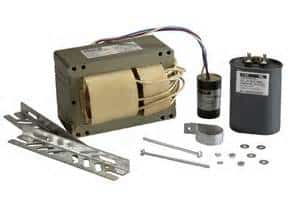
Conclusion
Metal halide lights can be dangerous, but you can reduce the danger by properly installing them, maintaining them, and using protective fixtures. By understanding potential hazards like UV radiation, mercury exposure, explosion risks, and electrical dangers, you can take the necessary precautions to use metal halide lights safely and efficiently.
When used responsibly, they are an effective way to light up all kinds of different spaces from big industrial places to outdoor arenas.

